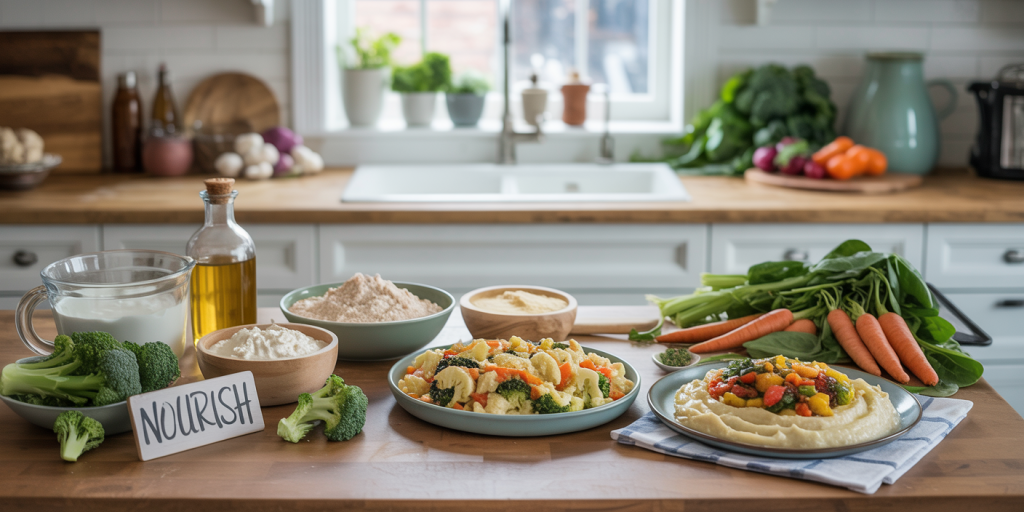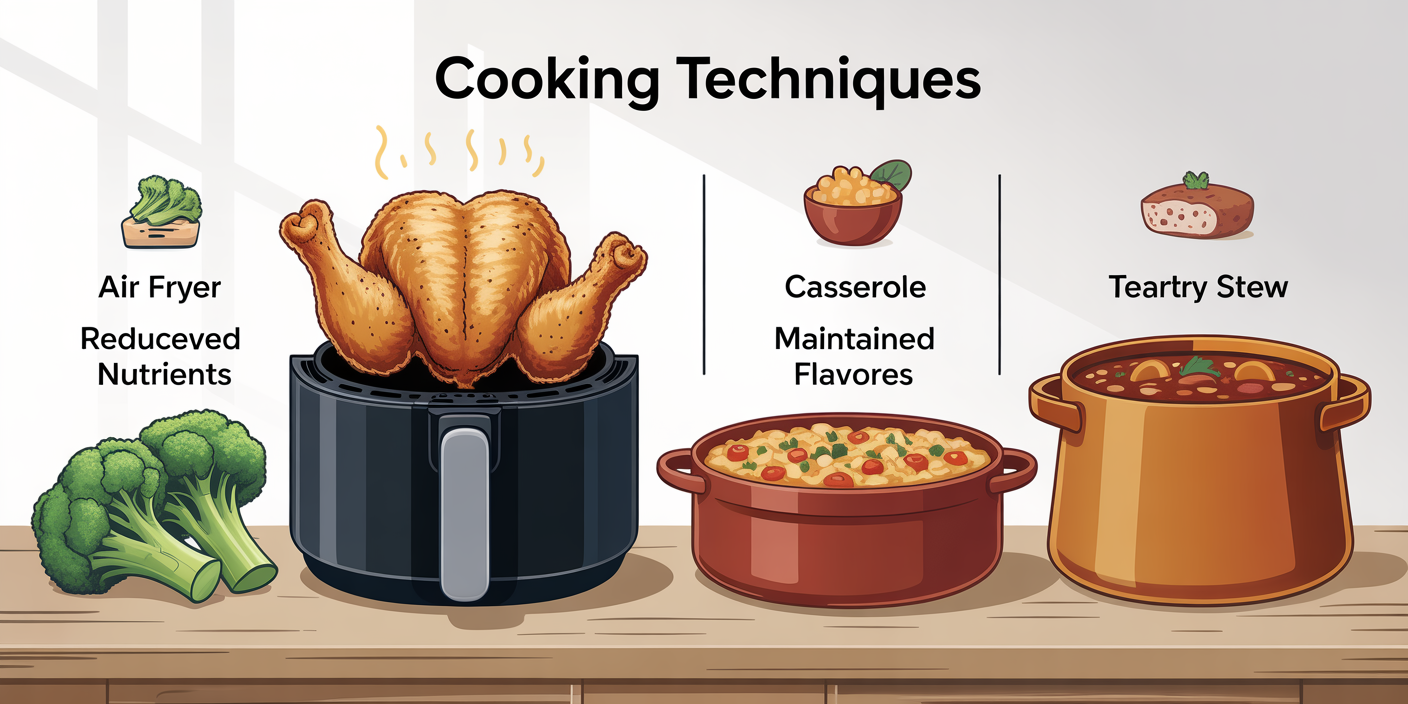Comfort foods have long held a special place in our hearts—and on our plates. Whether it’s creamy mac and cheese, rich meatloaf, or decadent chocolate cake, these dishes offer emotional solace and a sense of nostalgia. However, many traditional comfort foods are also laden with calories, saturated fats, and refined carbohydrates, which can conflict with modern health goals. Today’s culinary enthusiasts and nutritionists are increasingly focused on transforming these beloved classics into lighter, more nutritious versions without compromising flavor or satisfaction.

This article explores practical approaches to comfort food makeovers, backed by nutritional data and real-life examples. From ingredient swaps to cooking techniques, we’ll examine how to enjoy lighter versions of classic dishes while still relishing the tastes we cherish.
Rethinking Ingredients for Healthier Comfort Foods
The foundation of any lighter comfort food makeover begins with a thoughtful reevaluation of ingredients. Traditional dishes often rely on heavy creams, butter, and refined flour, which contribute to excessive calorie and fat content. Swapping these with healthier alternatives can significantly reduce the dish’s overall caloric density while enhancing nutritional quality.
For instance, mashed potatoes—a quintessential comfort food—are typically made with butter and whole milk. Substituting butter with olive oil and using low-fat Greek yogurt instead of cream not only lowers saturated fat but adds protein and probiotics. According to a nutritional analysis, using Greek yogurt reduces calories per serving by roughly 25%, while increasing calcium and protein content (USDA Food Database, 2023). Similarly, replacing white flour with whole wheat or almond flour in baked dishes can boost fiber intake and moderate blood sugar spikes.

Beyond substitutions, incorporating more vegetables into comfort food recipes is a powerful strategy. Cauliflower mac and cheese, a trendy alternative, replaces pasta with mashed cauliflower, cutting carbs by 50% compared to the traditional version (NutritionData, 2022). This swap not only lightens the dish but infuses it with vitamins C and K, making it a nutrient-rich option without sacrificing the cheesy flavor.
Cooking Techniques That Trim Calories without Sacrificing Taste
How a dish is prepared plays a crucial role in its healthfulness. Many comfort foods rely on frying or heavy sautéing, which add unnecessary fats and increase caloric intake. Adopting cooking methods such as baking, steaming, or air frying can significantly reduce the amount of added fat while retaining or even enhancing flavor and texture.
Take fried chicken, for example, a staple comfort food renowned for its crispy exterior. Air frying this dish can cut fat content by up to 75% compared to traditional deep frying, according to a study published in the Journal of Food Science and Technology (2022). This method circulates hot air to create a crunchy crust with minimal oil use. Real-world applications, such as recipes from the American Heart Association, demonstrate that air-fried chicken can satisfy cravings while fitting into heart-healthy meal plans.
Another approach gaining traction is the use of slow cookers or pressure cookers to prepare hearty stews or pot roasts. These devices require little to no added oil and preserve nutrients better than prolonged boiling or frying. For instance, a pressure-cooked beef stew retains more iron and vitamin B12 compared to its slow-cooked, oil-heavy counterpart (Food Chemistry Research, 2021). Additionally, these methods encourage cooking with leaner cuts of meat, improving both the nutritional profile and sustainability of the meal.
| Cooking Method | Typical Fat Content (per serving) | Nutrient Retention | Flavor Impact |
|---|---|---|---|
| Deep Frying | High (15-20g) | Moderate | Crispy, rich flavor |
| Air Frying | Low (3-5g) | High | Crispy, less oily |
| Baking | Low (5-7g) | High | Slightly drier, preserves flavor |
| Steaming | Minimal (0-1g) | Very High | Delicate flavor, soft texture |
This comparative table illustrates how kitchen techniques influence fat content, nutrient retention, and flavor, guiding home cooks toward smarter preparation choices for comfort foods.

Embracing Plant-Based Alternatives
A major trend in comfort food revamps is the emphasis on plant-based ingredients to reduce saturated fat and cholesterol traditionally found in meat-heavy dishes. Incorporating legumes, tofu, mushrooms, and plant-based proteins not only lightens meals but delivers fiber and antioxidants critical for long-term health.
Meatloaf, a comfort food staple, can be reinvented with lentils or chickpeas, reducing saturated fat by as much as 60% while contributing an impressive dose of dietary fiber (Harvard T.H. Chan School of Public Health, 2023). Lentil “meatloaf” recipes have gained popularity on cooking blogs and social media, praised for their moist texture and savory appeal.
In the realm of dairy, replacing regular cheese with reduced-fat or plant-based varieties helps lower cholesterol and caloric intake. For example, using nutritional yeast and cashew cheese in vegan mac and cheese alternatives delivers a cheesy flavor with less fat and lactose, accommodating dairy-sensitive individuals.
Case studies from community nutrition programs show that participants consuming plant-augmented comfort meals reported not only better digestion but also enhanced energy levels and weight management over a 12-week period (Journal of Nutrition Education, 2022). These findings highlight both the palatability and practical health benefits of embracing plant-powered versions of traditional comfort foods.
Portion Control and Mindful Eating: Complementing Food Makeovers
While ingredient swaps and cooking methods are key, managing portions remains critical to enjoying comfort foods without excess caloric intake. Research from the Centers for Disease Control and Prevention (CDC) confirms that even healthier recipes can contribute to weight gain if consumed in large quantities.
Portion control tools, such as using smaller plates or mindful eating practices, can enhance satisfaction with less food. Studies show that individuals who consciously slow their eating pace or savor each bite are more likely to feel full and less likely to overeat (Appetite Journal, 2023).
Practical examples include serving baked macaroni cheese in moderate ramekins rather than large casserole dishes to visually cue appropriate serving sizes. Similarly, using lettuce wraps instead of bread buns in sloppy joe recipes cuts carbs and calories while promoting mindfulness.
Nutritionists also encourage adding fresh salads or steamed vegetables alongside comfort foods to increase meal volume and fiber intake without significant calorie addition. This practice can improve satiety and reduce the temptation to consume larger portions of calorie-dense foods.
Healthier Comfort Food Makeovers in Real-World Settings
Many restaurants and food brands are now offering lighter versions of classic comfort foods driven by rising consumer demand for nutritious options. Chains like Panera Bread and Sweetgreen highlight dishes that tweak traditional recipes—for instance, substituting heavy cream sauces with cauliflower-based purees or offering grain bowls that mimic mac and cheese.
At-home cooking shows and social media influencers also play a pivotal role in disseminating recipes that prioritize nutrition and flavor. Examples like half-sweetened pumpkin pie with almond flour crusts or quinoa risottos instead of creamy rice versions circulate widely through Instagram and YouTube with millions of views, indicating broad interest.
Particularly noteworthy is the rise of “healthy comfort food” cookbooks, which compile scientifically-backed recipe modifications designed to reduce fat, sodium, and sugar without sacrificing authenticity. According to a 2024 market analysis, sales of such cookbooks have increased by 35% over the last three years (Nielsen BookScan, 2024), reflecting shifting consumer priorities toward balanced indulgence.
Future Perspectives: Innovations in Comfort Food Makeovers
Looking ahead, advancements in food technology and nutritional science promise even more innovative approaches to lightening comfort foods. Developments in plant-based meat alternatives continue to improve texture and flavor, making it easier for consumers to enjoy familiar dishes with significantly reduced environmental and health impacts.
Functional ingredients, such as fiber-rich prebiotics and protein isolates derived from pulses or algae, may be incorporated more widely to enhance not only nutrient density but also gut health resilience. The trend towards personalized nutrition, powered by AI and genetic testing, could enable bespoke comfort food makeovers tailored to an individual’s metabolic needs and preferences.
Moreover, sustainability considerations will increasingly influence comfort food transformations. Ingredients with lower carbon footprints—such as locally sourced vegetables or regenerative farming meats—may become standard in revamped recipes aimed at health-conscious and eco-friendly consumers alike.
In parallel, educational initiatives fostering cooking skills and awareness about ingredient quality will empower more people to undertake comfort food makeover projects at home, thereby amplifying public health benefits.
In summary, the future of comfort food lies in striking a balance between tradition and innovation, flavor and nutrition, indulgence and wellness. By continuing to explore creative ingredient swaps, cooking techniques, and mindful practices, comfort foods can be enjoyed as part of a healthy, sustainable lifestyle for years to come.

Deixe um comentário